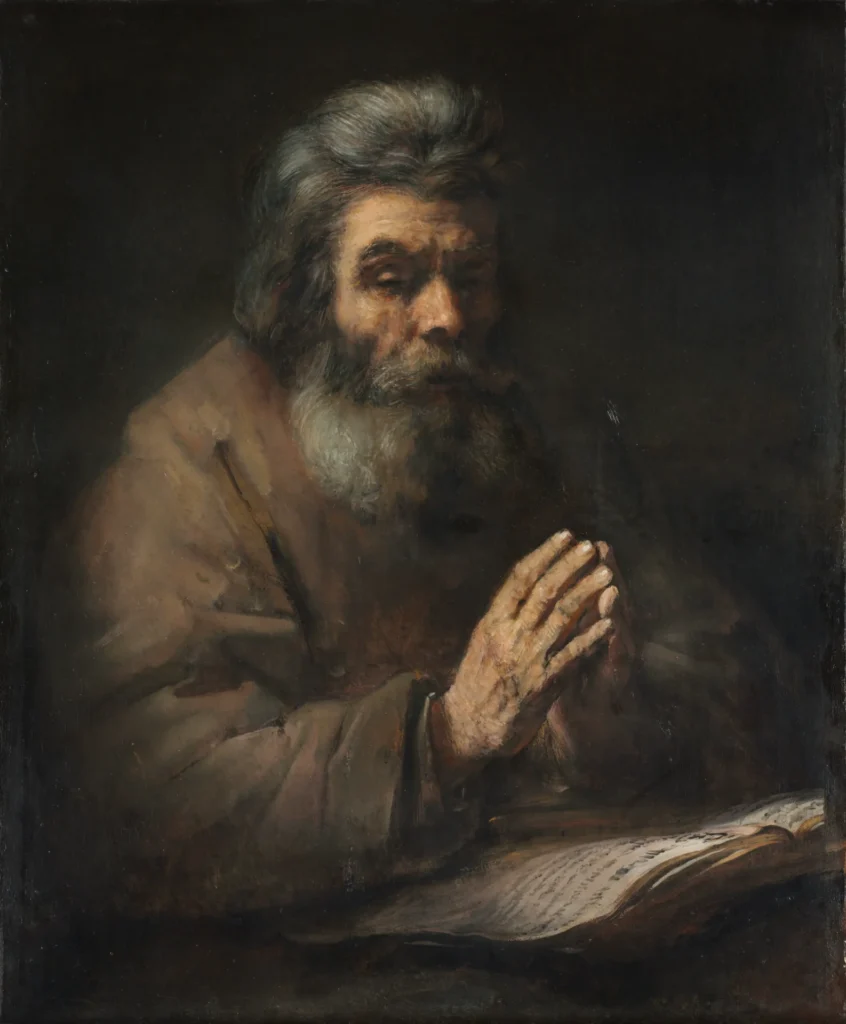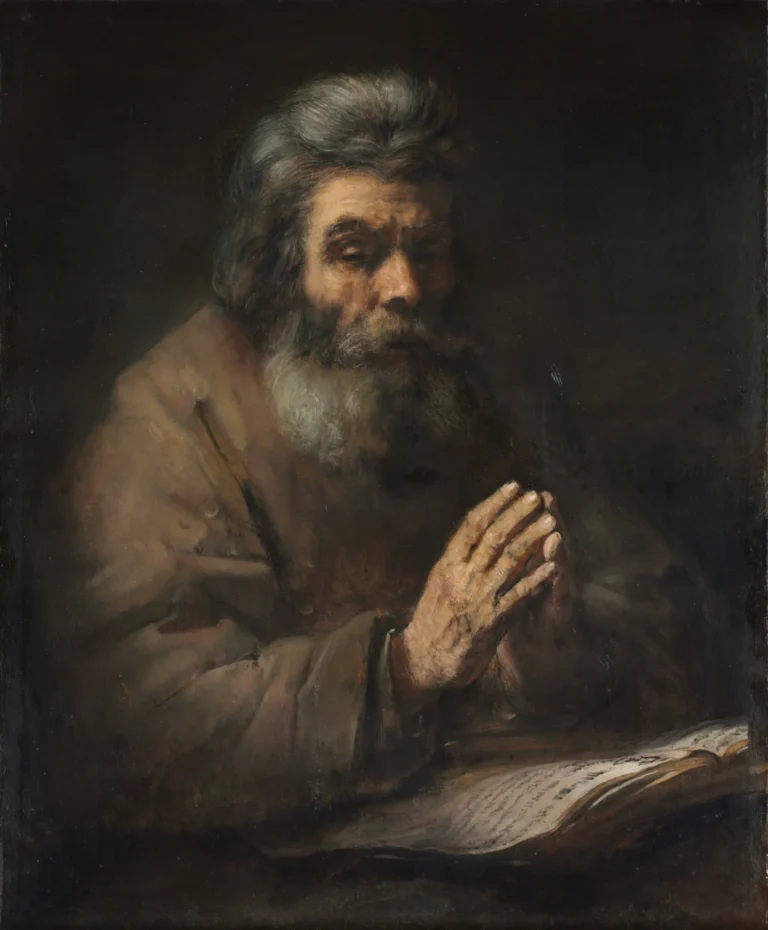An Elderly Man in Prayer
This poignant artwork, An Elderly Man in Prayer. attributed to Rembrandt van Rijn, captures an elderly figure immersed in deep prayer. The man’s weathered face tells tales of wisdom, his closed eyes concentrating on his devout moment, while his clasped hands reveal vulnerability and faith. The use of chiaroscuro emphasizes the emotional weight of the piece, encouraging reflections on themes of mortality and spirituality. Moreover, while Rembrandt’s version stands irrefutably impactful, another version attributed to a follower has sparked curiosity but lacks the same authenticity and depth.
Late 17th Century
About the Artwork
The story behind An Elderly Man in Prayer is integral to understanding the artistic intrigue of the piece. Rembrandt van Rijn, a master of the Baroque movement, produced this work as a celebration of faith and humanity. Painted during a time of deep religious sentiment, the elderly man serves as a symbol of reflection and introspection, embodying universal themes of devotion and the passage of time. The painting's emotional depth, achieved through dramatic contrasts of light and shadow, draws viewers into the spiritual experience of the figure. While the authenticated version remains a beacon of Rembrandt's genius, debates surrounding an imitative piece housed at the Cleveland Museum of Art reveal the ongoing fascination with his stylistic influence, showcasing the complexities of attribution in the art world.
Did You Know
Liked what you see? Add it to your collection.
Enjoyed reading? Share it.
... continued
The Authenticated Work
The most well-documented version of 'Old Man in Prayer' is indeed a work by Rembrandt van Rijn. This painting is a quintessential example of the Baroque and Tenebrist art movements. It depicts an elderly man in a moment of devout prayer, with his face marked by deep creases and lines signifying age and wisdom. His eyes are closed, and his hands are clasped in prayer. The use of chiaroscuro, a technique characterized by strong contrasts between light and dark, heightens the emotional gravity of the scene. The composition is simple, focusing the viewer's attention on the inner life and piety of the old man, inviting reflections on themes of faith, mortality, and spiritual practice.
The Disputed Attribution
There is another painting titled An Elderly Man in Prayer that was formerly attributed to Rembrandt but is now believed to be the work of a follower or a later imitator of Rembrandt's style. This painting, housed at the Cleveland Museum of Art, shows an elderly man seated with his eyes nearly closed and hands clasped in prayer over a large book. While it bears resemblance to Rembrandt's late works, particularly in its dramatic lighting and dark color palette, it has been reattributed due to the broad, flat brushwork of the garment, the poor handling of shadow on the hands, and the uniform treatment of the hair.










